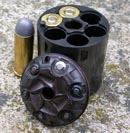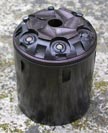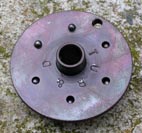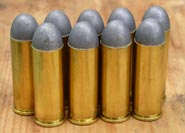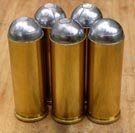Forum
Market
- High Wall / Flint Rifle / Muskett.
- Steyr kropatschek
- Winchester 1873
- Hagle kal. 410
- diesett i 12,17x44R
- Hagle til salgs
- blykuler i12,17 100 stk.12,17x44RhylserRn50 stk
On this day
5 November 1605
The Gunpowder Plot was a failed assassination attempt against King James I of England and VI of Scotland by a group of provincial English Catholics led by Robert Catesby. The plan was to blow up the House of Lords during the State Opening of... Read more ...
The Gunpowder Plot
The Gunpowder Plot was a failed assassination attempt against King James I of England and VI of Scotland by a group of provincial English Catholics led by Robert Catesby.
The plan was to blow up the House of Lords during the State Opening of England's Parliament on 5 November 1605, as the prelude to a popular revolt in the Midlands during which James's nine-year-old daughter, Princess Elizabeth, was to be installed as the Catholic head of state. Catesby may have embarked on the scheme after hopes of securing greater religious tolerance under King James had faded, leaving many English Catholics disappointed. His fellow plotters were John Wright, Thomas Wintour, Thomas Percy, Guy Fawkes, Robert Keyes, Thomas Bates, Robert Wintour, Christopher Wright, John Grant, Ambrose Rookwood, Sir Everard Digby and Francis Tresham. Fawkes, who had 10 years of military experience fighting in the Spanish Netherlands in suppression of the Dutch Revolt, was given charge of the explosives.
The plot was revealed to the authorities in an anonymous letter sent to William Parker, 4th Baron Monteagle, on 26 October 1605. During a search of the House of Lords at about midnight on 4 November 1605, Fawkes was discovered guarding 36 barrels of gunpowder— enough to reduce the House of Lords to rubble — and arrested. Most of the conspirators fled from London as they learned of the plot's discovery, trying to enlist support along the way. Several made a stand against the pursuing Sheriff of Worcester and his men at Holbeche House; in the ensuing battle, Catesby was one of those shot and killed. At their trial on 27 January 1606, eight of the survivors, including Fawkes, were convicted and sentenced to be hanged, drawn and quartered.

Chat
Offline
No chatting right now.
(You must be logged in to the forum to chat.)
Featured article

The Martini-Henry rifle was the British military service rifle from the end of the 1880\'s. It served on all continents and was a powerful and reliable rifle. This article is the first part in a series of two on the Martini-Henry rifles. This part deals about the background history of the Martini-Henry rifles.
.577/.450 Martini-Henry Rifles - Part 1
R&D Conversion Cylinders
 About
About Les artikkel på norsk
Les artikkel på norsk
The years following the American Civil War was a time of unrest and upheaval, and a time that saw a transition from the percussion system to metallic cartridges. Percussion revolvers, also known as cap and ball revolvers, were made by the thousands before and during the war, but the principle of muzzleloading started to become obsolete when the new metallic cartridges became common after the war.
Find out more!
You can learn more about metallic cartridge conversions and black powder cartridge revolvers in the brand new book From Musket to Metallic Cartridge: A Practical History of Black Powder Firearms.
The cap and ball revolvers could easily be converted to use the new metallic cartridges. In the 1800s there were many methods for converting percussion revolvers. Some variants even allowed the shooter to use both the old percussion cylinder and a new cartridge cylinder. Many patents were based on the old percussion cylinder, in which a chamber was bored out for the cartridges. At the rear where the percussion nipples are located, it was made some sort of device that facilitated the chambering of the metallic cartridges. The R&D conversion cylinders consist of two parts: a cylinder and a back plate with six individual firing pins. The cylinder must be removed from the revolver to be loaded. In the cylinder I use in my .44 Remington New Army, six cartridges are slipped into the cylinder, and the back plate is placed over the cylinder. There is an indexing pin in the body so that the firing pins align properly with the chambers in the cylinder. The cylinder and back plate is then inserted back into the revolver. This may seem a bit cumbersome, but it is way faster compared to loading a percussion revolver. The percussion revolvers could be loaded with paper cartridges, but they tended to get wet and spoiled by moisture. This problem was as good as eliminated with metallic cartridges.
Today the conversion cylinders for replica cap and ball revolvers have become popular among black powder shooters. The R&D cylinders are available for the most common replica revolvers. The cylinder that I use in my .44 Uberti Remington New Army is in .45 Colt (Long Colt). Another alternative is the Kirst Koverter cylinders. These cylinders only take five cartridges, but they have a loading gate that eliminates the need to remove the cylinder to reload. Kirst Konverter cylinders are somewhat more expensive compared to the R&D cylinders.
So far the accuracy from the R&D cylinder has been very good, as a matter a fact it seems to shoot just as well as the percussion cylinder. I have had best results with roundballs, but it also performs well with Lee's .456" conical ball which is designed for percussion revolvers. I size the balls to .454". Only top grade, certified steel is used in the production of these cylinders, and the manufacturer states that is possible to use light smokeless loads in the R&D cylinder, but I haven't tried it and I have no intentions of doing it either. In a revolver that is made for black powder I feel it is more appropriate and safe to stick to black powder.
The conversion cylinders are allowed in the metallic cartridge competition Smith and Wesson when competing in competitions held by the Norwegian Black Powder Union. Some shooters use the R&D cylinders with very good results. Most shooters load the cartridges with roundballs, and they even grease the cylinder mouths the same way as many cap and ball revolver shooters do. With a R&D cylinder you only need one revolver to shoot both in the Mariette (the percussion revolver competition) and the Smith & Wesson competition.
Here's a small video of how the R&D cylinder works:
The R&D cylinders are available for:
.44 calibre- Pietta Remington New Army
- Pietta 1860 Army Colt
- Uberti Remington New Army
- Uberti Dragoon Colt
- Uberti 1860 Army Colt
- Ruger Old Army
- Pietta Remington New Model Navy
- Pietta 1851 Navy Colt
- Pietta 1861 Navy Colt
- Uberti Remington New Model Navy
- Uberti 1851 Navy Colt
- Uberti 1861 Navy Colt
- Uberti Colt 1862 Police
- Pietta 1863 Pocket Remington

